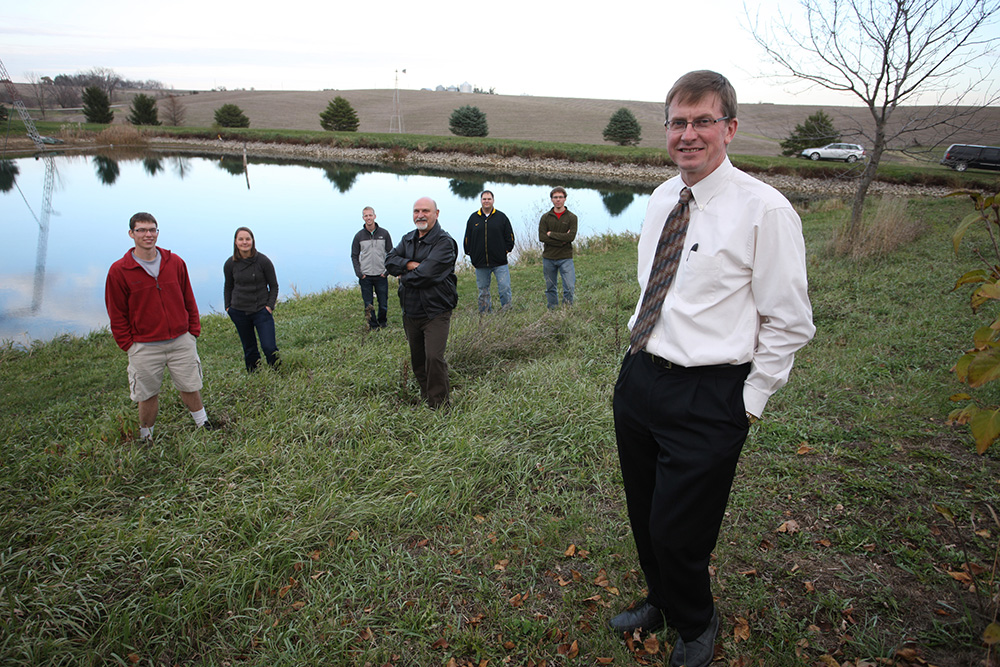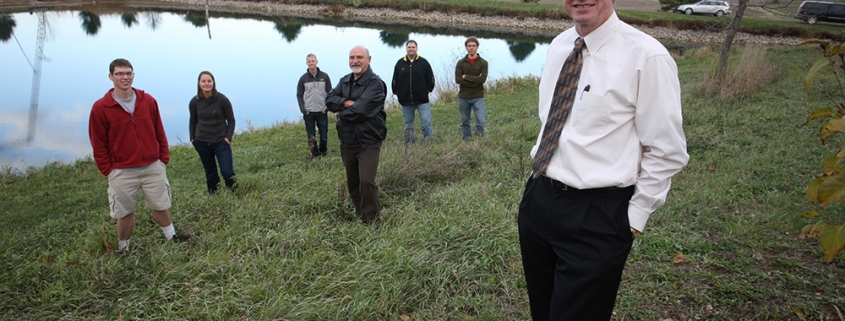IFC Helps Bring $96.9M HUD Grant to Iowa

January 26th, 2016
The Iowa Flood Center was instrumental in bringing a new $96.9M grant from the U.S. Department of Housing and Urban Development to Iowa for a statewide watershed improvement program, the Iowa Watersheds Approach (IWA). The IWA will address issues associated with the devastating and dangerous floods Iowa communities experience year after year.
Through strong partnerships and collaboration, the Iowa Flood Center (IFC) (part of IIHR—Hydroscience & Engineering at the University of Iowa), the Iowa Homeland Security and Emergency Management Department (HSEMD), and numerous other partners joined forces to create the IWA program. The goals of the IWA include the following:
- Reduction of flood risk;
- Improvement in water quality;
- Increased resilience;
- Engagement of stakeholders through collaboration, outreach, and education;
- Improved quality of life and health for Iowans; and
- Development of a replicable program.
Nine distinct watersheds across Iowa will serve as project sites for the IWA. These are: Bee Branch Creek in Dubuque, Upper Iowa River, Upper Wapsipinicon River, Middle Cedar River, Clear Creek, English River, North Raccoon River, West Nishnabotna River, and East Nishnabotna River. Each will have the opportunity to form a Watershed Management Authority (WMA), develop a hydrologic assessment and watershed plan, and implement projects to reduce the magnitude of downstream flooding and to improve water quality during and after flood events. Volunteer landowners may select from a suite of conservation practices, such as farm ponds, wetlands, terraces, bioreactors, and perennial crops. Landowners will be eligible to receive up to 75% cost share assistance for the construction of such practices.
The IWA program is a collaboration of numerous agencies, universities, non-profits, and municipalities. Partners include: Iowa Economic Development Authority, Iowa Homeland Security & Emergency Management, University of Iowa/Iowa Flood Center, Iowa State University, University of Northern Iowa, Iowa Department of Agriculture & Land Stewardship, Iowa Department of Natural Resources, National Resources Conservation Service, County Soil & Water Conservation Districts, The Nature Conservancy, Iowa Natural Heritage Foundation, Iowa Soybean Association, Iowa Corn Growers Association, Iowa Farm Bureau, Iowa Agricultural Water Alliance, local Resource Conservation & Development offices, Iowa Department of Transportation, Iowa Association of Counties, Silver Jackets Flood Risk Management Team, and many more.
Iowans have already tried, tested, and approved the concepts of the IWA. In 2010, the IFC was awarded HUD funds for the creation of the Iowa Watersheds Project (IWP). The IWP provided funding for five watersheds across the state (Upper Cedar River, Turkey River, Soap Creek, Middle Raccoon, and Chequest Creek) to establish a WMA, develop a hydrologic assessment and watershed plan, and construct practices similar to those mentioned above. As the IWP enters its final year and is completing the construction of practices, the landowners and community members are noticing the benefits.
“Structures have provided significant savings in federal, state, and local road and bridge maintenance costs to our county,” commented a Supervisor in Davis County.
The WMAs have been able to leverage IWP resources to seek additional funding for continued projects and practice installation.
One landowner stated, “The project has created jobs and outside income for our small communities… The structures have increased the value of ag land, not only for the landowners, but for those downstream as well.”
The IWA represents a vision for Iowa’s future that voluntarily engages stakeholders throughout the watershed to achieve common goals, while moving toward a more resilient state. It is a replicable model for other communities where the landscape has lost its natural resilience to floods. Although the IWA targets watersheds impacted by floods from 2011–2013, the impacts will ripple downstream from Iowa to the Mississippi River to the Gulf of Mexico. This program is not only about Iowans helping Iowans, but also about demonstrating Iowans’ commitment to agricultural stewardship, to the environment, to their neighbors, and to the future.




